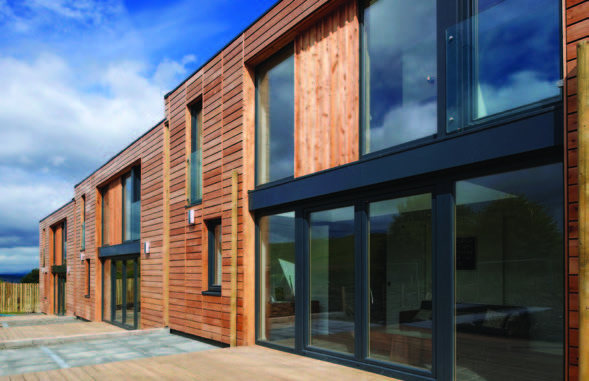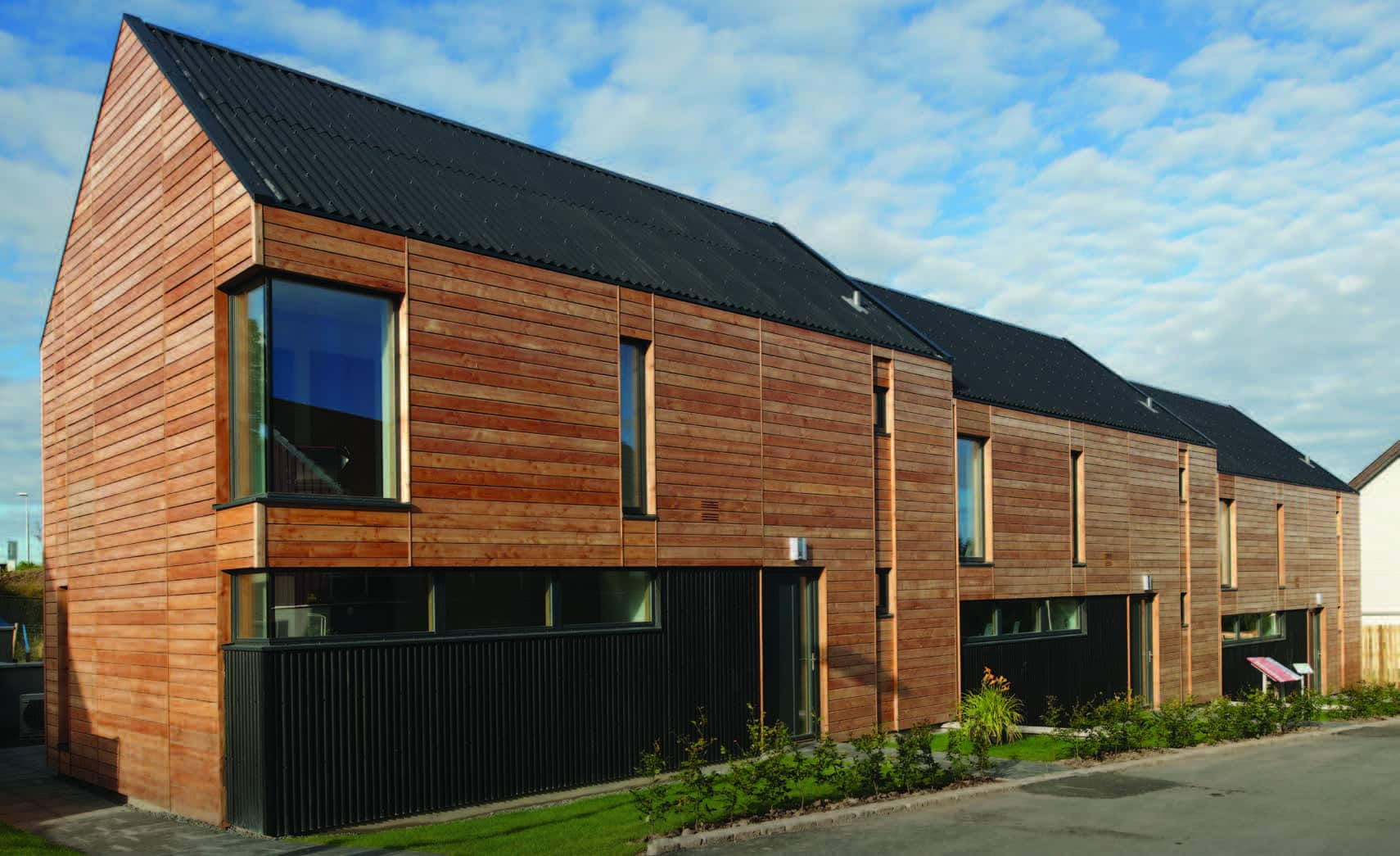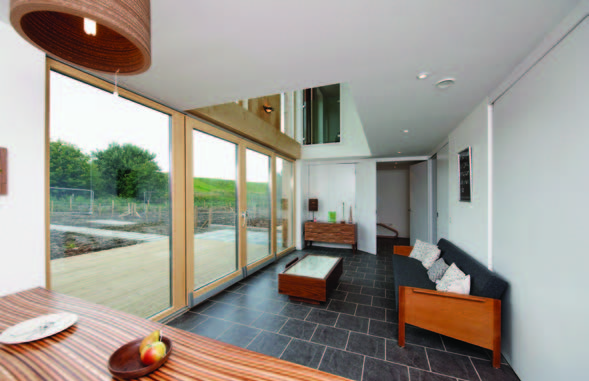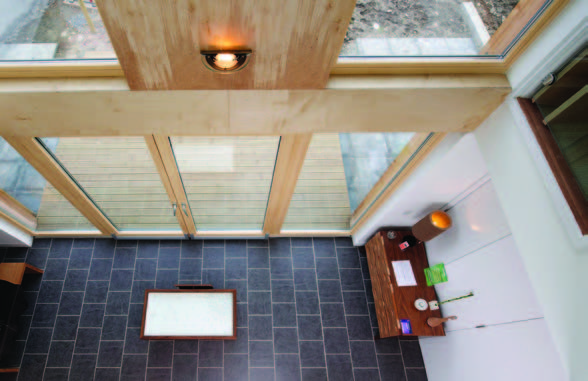The overall aim of the project was to create an exemplar of three terraced houses as a catalyst for the wider building industry, and as an inspiration for future housing design and development.
The houses use the rigorous German ‘Passivhaus’ standard for energy efficiency, resulting in ultra-low-energy houses which dispense with conventional heating systems altogether. In fact, the heating load is so small that a hairdryer could be used to heat the house.
The houses were designed to be quiet, modest, sustainable, affordable and attractive to both volume house builders and social housing providers alike.
They were erected in only nine days by site operatives who were previously unfamiliar with this type of prefabricated, modern method of construction.
Timber qualities
The Passive House units use a locally manufactured PassiveWall™ timber frame closed panel system. This ensures a high standard of construction quality and accuracy while providing extremely low U-values and high levels of airtightness. The panels are made from home-grown Scottish timber with an insulated core of recycled glass wool made from 80% recycled glass bottles.
The external panels are pre-wrapped with a thermal foil membrane and internally with a pre-fitted thermal vapour barrier. This provides the main airtight seal and an extremely high level of airtightness.
The external units are clad in locally sourced Scottish larch timber sourced within 60 miles of the site. They are broken by continuous vertical reveal boards and vertical square-edged boards with cover battens to the rear elevation. The cladding is left untreated to weather naturally to a silver-grey colour, embedding the buildings within the landscape.
Locally sourced Forest Stewardship Council timber was also specified for cladding battens, skirtings, cills, door posts and door facings.

Special timber-related features
The terrace has achieved an 80% reduction in energy by using a locally manufactured off-site prefabricated closed panel system. It also uses high-performance windows to provide a super-insulated airtight building fabric.
Ventilation heat losses are massively reduced while ensuring excellent thermal comfort internally.
A balanced mechanical ventilation system also reduces heating bills and provides a cleaner, fresher quality of indoor air. Hot water is provided from an air source heat pump.
Biodiversity is enhanced through careful landscape design and the use of local species, enhancing of wildlife habitats, composting, and providing opportunities for food production.
A library of sustainable building materials
Our website includes a web-based resource that showcases sustainable, traditional, innovative, recycled and low carbon building materials. If you are looking for inspiration or information on different types of materials to consider for your project, visit our materials library.




